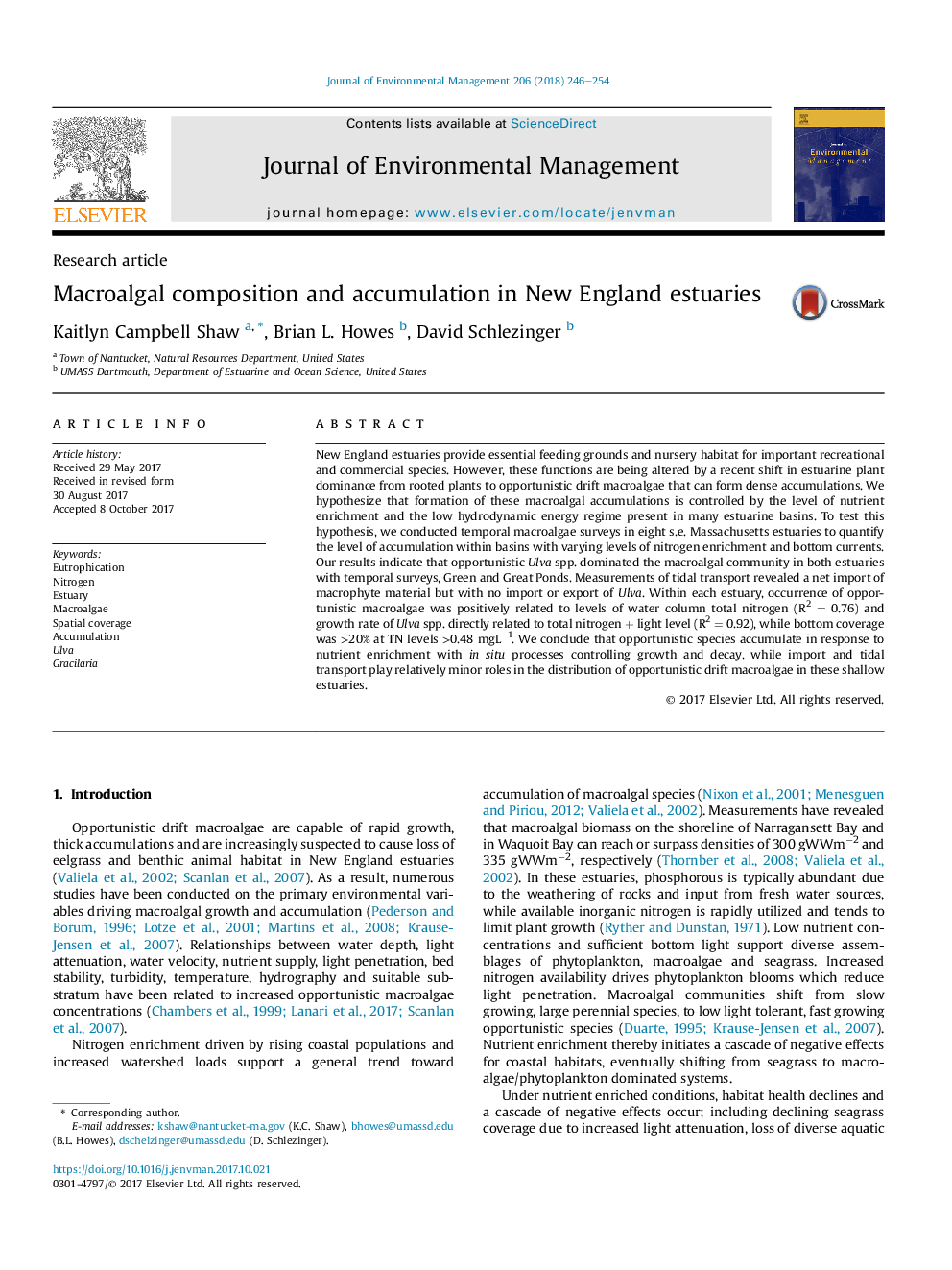| Article ID | Journal | Published Year | Pages | File Type |
|---|---|---|---|---|
| 7478677 | Journal of Environmental Management | 2018 | 9 Pages |
Abstract
New England estuaries provide essential feeding grounds and nursery habitat for important recreational and commercial species. However, these functions are being altered by a recent shift in estuarine plant dominance from rooted plants to opportunistic drift macroalgae that can form dense accumulations. We hypothesize that formation of these macroalgal accumulations is controlled by the level of nutrient enrichment and the low hydrodynamic energy regime present in many estuarine basins. To test this hypothesis, we conducted temporal macroalgae surveys in eight s.e. Massachusetts estuaries to quantify the level of accumulation within basins with varying levels of nitrogen enrichment and bottom currents. Our results indicate that opportunistic Ulva spp. dominated the macroalgal community in both estuaries with temporal surveys, Green and Great Ponds. Measurements of tidal transport revealed a net import of macrophyte material but with no import or export of Ulva. Within each estuary, occurrence of opportunistic macroalgae was positively related to levels of water column total nitrogen (R2 = 0.76) and growth rate of Ulva spp. directly related to total nitrogen + light level (R2 = 0.92), while bottom coverage was >20% at TN levels >0.48 mgLâ1. We conclude that opportunistic species accumulate in response to nutrient enrichment with in situ processes controlling growth and decay, while import and tidal transport play relatively minor roles in the distribution of opportunistic drift macroalgae in these shallow estuaries.
Related Topics
Physical Sciences and Engineering
Energy
Renewable Energy, Sustainability and the Environment
Authors
Kaitlyn Campbell Shaw, Brian L. Howes, David Schlezinger,
